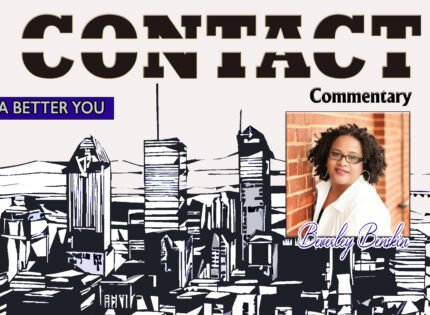Isn’t it amazing that we’ve reached a point where we no longer must bend over backward to be accepted by the public eye? We don’t have to worry about strange looks just because we decide to rock our natural hair. Finally, we can walk into schools and workplaces with our curls and coils, knowing we don’t have to straighten our hair to fit in or be accepted. But this wasn’t always the case. Not too long ago, I didn’t even know what my natural curls looked like. I was glued to my flat iron, stretching every strand of my hair, thinking that was the only way to make it “manageable” and “acceptable.” It’s wild to think about now, but back then, it was a common story.
In this issue, let’s dive into the beautiful evolution of our curls and celebrate how far we’ve come. We now have role models our children can look up to on TV and online, showing that wearing our natural hair isn’t just okay—it’s powerful.
To understand how we got here, we need to look back at where it all started. In the 1960s, the natural hair movement wasn’t just about hair; it was a powerful political statement during the Civil Rights Movement. It was a declaration that we wouldn’t change who we are to please anyone. Iconic activists like Angela Davis and Marcus Garvey, alongside the multi-talented Elaine Brown—writer, singer, and chairwoman of the Black Panther Party—showed us how to walk proudly, embracing the hair we were born with. They lived out Marcus Garvey’s powerful words: “Don’t remove the kinks from your hair! Remove them from your brain!” For us, natural hair became a symbol of resistance, a bold statement to the world that we wouldn’t be held down by societal expectations. Our kinks and curls were—and still are—beautiful.
As time went on, our hair continued to be used as a political tool and a marker for what society deemed “normal,” practically targeting Black women and children. We were policed and punished for the hairstyles we wore—whether through school regulations, office dress codes, or even rulebooks for competitive sports. From braids and afros to dreads, we felt the sting of being labeled “unacceptable.” This pressure drove us back to trying to conform to societal standards, bringing in styles like Jheri curls and asymmetrical bobs. Ultimately, many of us turned to our curls’ worst enemy: the relaxer. We took a step back and allowed society to dictate that our natural hair wasn’t good enough.
Fast forward to 2006, when the EEOC issued its Compliance Manual on Race and Color Discrimination, which addressed workplace discrimination based on physical characteristics like hair. This was huge for the Black community! It meant that we wouldn’t be forced to change our hair to fit into corporate or educational settings. Our afros, curls, and braids could be worn freely, reclaiming what was rightfully ours. This change sparked a new era where more of us began embracing our natural hair. It’s now common to see people proudly wearing their natural hair instead of altering it to fit in.
Influencers like Bianca Renne inspired me to embrace my natural curls by focusing on using clean, natural products. Then there’s Tracee Ellis Ross, an actress who often speaks about her experiences in the entertainment industry, where hairdressers didn’t know how to style her hair. She took matters into her own hands, learned to style her hair, and eventually launched Pattern Beauty—a line specifically for curly hair. Tracee’s impact on the curly hair community has been immense, offering products that truly work for our hair, rather than being just another celebrity-endorsed line.
The natural hair community has come so far in recent years, making a significant impact on future generations. Our kids will grow up in a world where they won’t feel pressured to alter their hair to fit society’s standards. They’ll embrace their beautiful brown skin and the curls that twist and turn in ways we may never fully understand but are undeniably stunning. We can be proud of our hair because of the trailblazers who fought for our right to wear it as it is.
So, the next time you think your natural hair is too hard to maintain, remember those who fought for your right to wear it proudly. Our hair is not a problem to be solved; it’s a crown to be worn with pride. As the famous author Monica Millner said, “I feel that the coils, curls, or tight coils in Afro hair are beautiful and unique. No other race on this planet has hair like ours—that makes me proud.” Let’s continue to celebrate our natural beauty and teach the next generation to love the hair they’re blessed with.
Did it take you long to embrace your natural hair?
Share your story with me on Instagram @_bestbeauty97 and don’t forget to sign up for our newsletter to stay up to date for the next issue!
Interested in getting a curly/coily hair consultation to see how YOU can embrace your natural hair? Send me a DM or email me at mareshmamitchellbest@gmail.com, and I’ll send you the link to my services! I look forward to helping you meet your natural hair goals.














